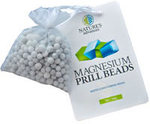Just bought this and found it to be substantially (~35%) lower than the competitors.
Magnesium oxide prill beads are used in water filtration to both disinfect, remove excess chlorine and fluoride, and raise pH (make it more alkaline). I did a bunch of research on this, and there's a lot of fanciful fantasy stuff written about this, about restructuring water and what not, but empirical results do show that the water comes out with less contaminants — both natural and artificial — and more alkaline (with higher magnesium concentration, which is a good thing).


QUACK QUACK. Want some bread? what a waste of money, shit like this devalues the credibility of real science.
Lmao all this "research", yet citations remain absent…
EDIT: Actual picture of OP doing his "research"
Really? You're going to need to elaborate on that one.
From the website
Have you tried doing some actually research? that is reading peer reviewed journal article published in a well standing journal then looking to other studies that find similar results to reaffirm what you're reading isn't bullshit. The downvote you slung my way indicates otherwise.